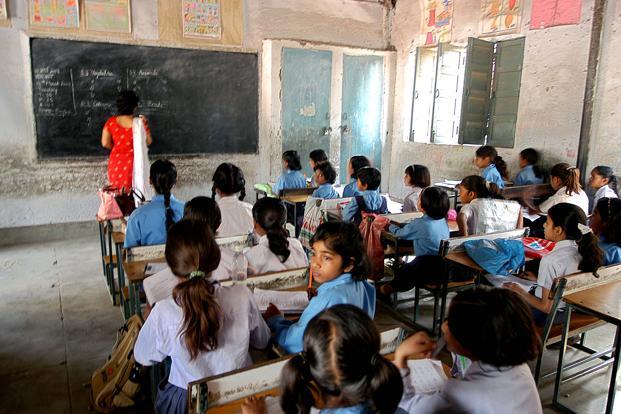The role of education in improving the condition of a state and allowing it to move on the track of development has been widely accepted. But in case of Haryana there are multiple dimensions to the percolation of education and their associated impact upon the social ethos.
Deendyal Singh is a Ph. D Scholar at Tata Institute of Social Science and based in Mumbai.

Globally education has been accepted as an important variable and contributing factor in improving people’s overall quality of life (Dreze & Sen, 2013). No wonder many international and national reports have highlighted this by way of studying countries on various socio-economic variables and have come up with several reports like the Human Development Report, Human Capital Report, and Poverty Index and so on. These reports have attempted to study linkages between different social-economic indicators like education and health, literacy and women empowerment, education and poverty etc. The idea that education and health are very important to improve other social-economic indicators has wide acceptance throughout the world and India is not an exception to this (Sen, 2008).
Even before independence, the idea of using education as a tool to garner people towards the Indian freedom struggle was promoted by freedom fighters like Mahatma Gandhi and Nehru. Earlier leaders who were against the wider struggle for independence were of the opinion that till the masses are not widely educated in basic literacy and socio-economic concepts, national struggle for independence has to be led by the educated middle class.
However, even after British interventions in the education, the freedom struggle was largely led by an educated middle class. One mostly given reason for this is that education provided by the British was vocational in nature and that was only meant to creating a skilled force for British offices. This is largely true considering the number of Indians employed by the British in various military, administrative, judicial posts.
In the post-independence period education took a back seat in initial Five-Year Plans as Nehruvian inward-looking policies were largely focused on heavy industries. But the fact that economic growth can’t be sustainable in the long run if the population is not educated at-least in basic skills led to wide governmental intervention in this sector. Community development programs in the 1950s and National Education Policy played a significant role in making education an important element in government policies (Dreze & Amartya Sen, 2002).
Serva Siksha Abhiyan and then the Right to Education Act 2009 has led to mass awareness on the importance of education in one’s individual life and also for Nation building. Since independence, the overall literacy rate has increased for both males and females. However, there is huge diversity on these numbers both at states and district levels in India.
Considering the national level data related to education and other developmental indicators some preliminary assumption can be made. These assumptions are that education (as independent variable) and development indicators (dependent variables) are interconnected and have a vice-versa relationship with each other. Simplistically if the literacy rate of a region has increased consistently then other development indicators also must show some improvement if we go by the above assumption. For example, a widely accepted belief is that female literacy is very important for improving other indicators like sex ratio. So, if a region has good female literacy rate then other indicators related to females like sex ratio should be on high side and also if literacy rate is very poor then it will have negative impact on other social indicators like sex ratio- if we only take these two indicators to see causal relationship between them as of now to establish fundamental assumptions for the discussion.
However, the contradiction has been found in some districts of Haryana related to above-mentioned assumptions. Haryana is a typical example of a state that has been on the front seat of economic development through the Green Revolution and then economic liberalization policies of Indian government after 1991. Haryana’s one leg is in the increasing growth boat and the other is in sinking boat of social development indicators. It has consistently performed poorly in sex ratio compared to other states.
The fact that economic development does not necessarily result in social development is a well-studied issue and has been established with various studies especially ones related to Kerala model of development where economic growth is poor related to Northern states like Haryana but their social indicator is consistently on top. But from these studies only the assumption that literacy plays important role in improving other social indicators like sex ratio, infant mortality rate, maternal mortality rate, institutional delivery etc. has been established more strongly over the years which has resulted in widely publicised national and state level education schemes with the hope that if basic literacy improves then it will have a positive impact on other indicators as has been the case in states like Kerala (Ramchandran, 1998).
Going back to the contradiction found in Haryana related to these assumptions it has been found in some districts that the case is totally opposite. For example, Sonipat and Gurugram are economically well developed districts of Haryana and both have one of the highest female literacy rates, 70.9 and 77.6 respectively but surprisingly also has one of the worst sex ratios, 853 for both the districts and also child sex ration (0-6), 790 and 826 respectively. In contrast to this Mewat district is predominately habituated by Meo farmers and is seen to have the lowest female literacy rate (37.6) but have highest sex ratio in Haryana (906) and also highest child sex ratio (903) (Haryana, 2011).
These numbers go against the assumption discussed above that improvement in literacy tends to have a positive impact on other social indicators. However, as mentioned this assumption is true in most cases like Kerala and some district of Haryana. But cases of Sonipat, Gurugram and Mewat districts are unexplainable form this assumption.
To understand this particular case of Haryana in relation to the relationship between literacy and other developmental indicators there is a need to look at the historical socio-cultural development of the state and then its impact of current socio-economic indicators. Specific district level analysis is also required to study cases like Mewat where while having lowest literacy rate have the highest sex ratio. On a very simplistic level, in this case, the question arises how come in a district where people don’t want to let their girl child get an education but are letting them live. In the case of Sonipat and Gurugram questions arises that how come is state having the highest literacy rate with one of the highest economic growth are one of the worst performing districts when it comes of sex ratio? Are people of these districts are wanting education for their girls but they don’t want more girl children in the first place. Well, these simple questions are just an attempt to try to understand a very complicated and multidimensional case of Haryana.
In addition to the above districts which contradict our assumption of a positive relationship between literacy and other developmental indicators, there is a district named Mahendragarh which somewhere support this assumption. Mahendragarh has the second lowest literacy rate but it doesn’t have high sex ratio like Mewat but it has one of lowest sex ratio (894) and unfortunately, it is in decreasing trend (in 2001 it was 918). Its child sex ratio also has declined from 818 to 778. The case of Mahendragarh looks easy to understand as all developmental indicators are on the lower side which supports the assumption that these indicators have a positive relationship with each other. But Sonipat, Gurugram and Mewat are totally opposite cases which need specific explanation based on district level analysis.
The contradictions between different districts on Haryana gets more complicated when we look at the numbers from the rural and urban point of view. According to the National Family Health Survey 4 (2015-16) overall sex ratio has declined from 897 to 846 at the state level for Haryana. But the interesting fact is that the sex ratio for urban areas that are lower at 846 then to rural 885. Not only this, if we see the coverage of all basic vaccinations it is higher in rural areas 65 percent against 57 percent for urban areas (IIPS, 2017). Now here the question arises how come urban areas having high literacy for both male and female have low sex ratio and low coverage of vaccinations. Urban areas are termed urban because of population parameters and engagement of population in non-agriculture activities. This also means that education, health, and other modern facilities are available for people in urban areas. But this assumption then contradicts social development indicators in urban areas especially sex ratio and basic vaccination.
Considering the above assumptions and its contradiction in relation to Haryana not only require an in-depth comparative analysis of development indicators of Haryana but also requires to study socio-cultural and historical nature of Haryanvi society. However, we should be careful in not blaming developmental indicators like education and literacy but to study their interrelationship in the context of Haryana (Nawani, 2016). This also has to be substantiated by the study of other stakeholders like governance, grass root level organizations like Panchayat, prevalent cultural norms, state textbooks etc.










